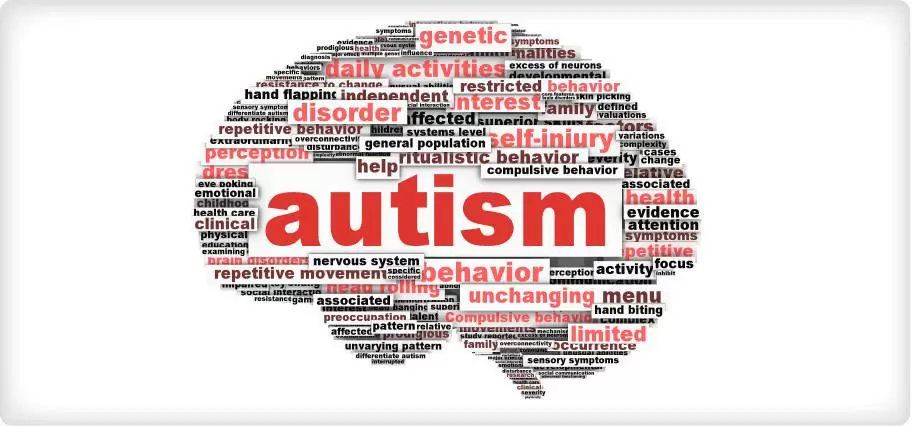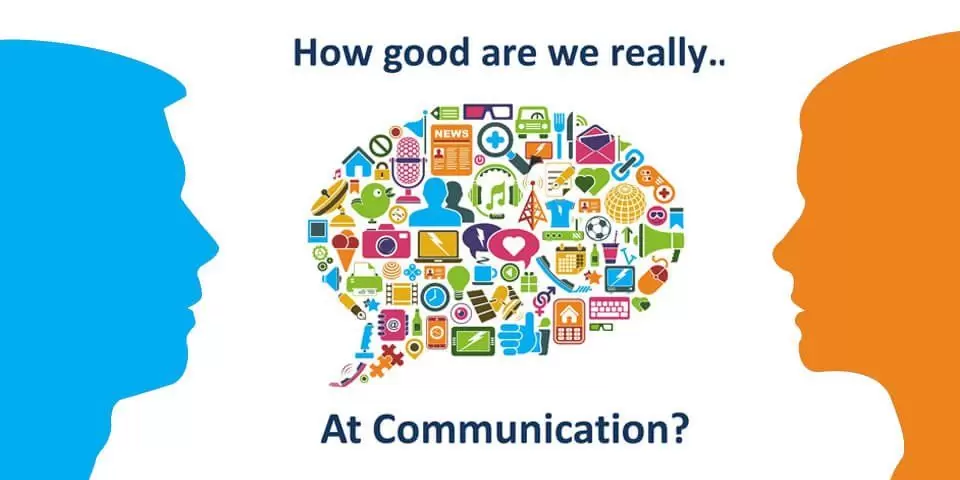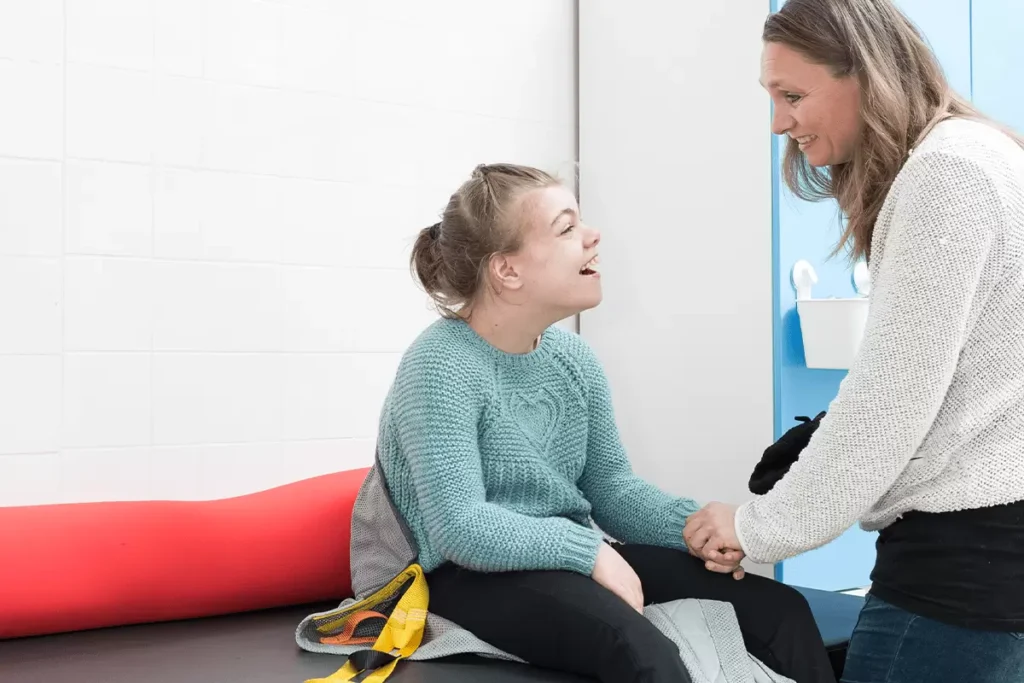Introduction
Autism Spectrum disease (ASD) is a complex neurodevelopmental situation.
Which can substantially affect a character’s capacity to talk, engage socially and adjust their behavior.
Whilst the middle features of autism consist of social interaction challenges and communication problems.
Many people at the spectrum also revel in quite a number behavioral troubles that may be each tough and disruptive.
In this blog we discussed top 5 common autism with behavior problems.
Those behavioral problems can take place in diverse ways, frequently stemming from the particular sensory processing, cognitive and emotional processing variations related to autism.
Know-how the underlying causes and patterns of those behaviors is essential in developing effective strategies for handling and addressing them.
Common Autism-Related Behavior Problems
- Aggression and Self-Harm
One of the maximum concerning behavioral challenges frequently seen in individuals with autism is aggression and self-harm. This may encompass physical aggression toward others, together with hitting, kicking, or biting, as well as self-injurious behaviors like head-banging, scratching or reducing.
The triggers for these aggressive or self-harming behaviors can range. They’re regularly related to sensory overstimulation, frustration with conversation problems, or an inability to express feelings efficiently. Individuals with autism may lash out or harm themselves as a means of handling overwhelming feelings or situations they can’t manage.
Strategies for Managing Aggression and Self-Harm:
- Become aware of and address potential triggers through environmental modifications and sensory law strategies
- Train opportunity coping mechanisms, which includes deep respiration exercises or the usage of a stress ball
- Put into effect superb reinforcement and behavior amendment packages to inspire appropriate behaviors
- Are looking for expert aid, which includes from a behavioral therapist, to increase a comprehensive intervention plan
- Repetitive and Restrictive Behaviors
Another commonplace behavioral project confronted through individuals with autism is the presence of repetitive and restrictive behaviors. Those can consist of obsessive pastimes, inflexible routines and compulsive rituals that the man or woman feels forced to engage in.
Those behaviors frequently function as a coping mechanism. Supporting the character discovers an experience of consolation and predictability in an international that may be overwhelming and unpredictable. However, they can also considerably interfere with day by day functioning and restrict the individual’s potential to adapt to new situations or interact in a ramification of sports.
Strategies for Managing Repetitive and Restrictive Behaviors:
- Progressively introduce and inspire extra flexibility in routines and transitions
- Redirect repetitive behaviors towards alternative, more optimistic sports
- Encourage the improvement of a much broader variety of hobbies and interests
- Offer established possibilities for sensory stimulation and motion breaks
- Difficulty with Transitions and Changes in Routine
Individuals with autism regularly thrive on predictability and habituality, and changes in their environment. Each day’s schedule may be a widespread supply of distress and behavioral demanding situations. The inability to cope with surprising conditions or transitions can result in meltdowns, tantrums or withdrawal.
These problems are frequently rooted within the autism-related demanding situations with flexibility, emotional law and processing sensory records. Sudden modifications can be perceived as overwhelming, triggering tension, frustration or a sense of lack of control.
Strategies for Managing Transitions and Routine Changes:
- Use visible schedules, timers and different tools to offer clear shape and predictability
- Progressively introduce and prepare for adjustments in habitual via social tales and practice session
- Offer sensory-based totally techniques, including fidget toys or motion breaks, to assist individuals self-regulate
- Collaborate with caregivers, educators and different specialists to make sure a steady supportive approach
- Sensory Processing Issues
Sensory processing challenges are commonplace among people with autism and might considerably contribute to behavioral troubles. Individuals can be hypersensitive or hyposensitive to sure sensory inputs, leading to distress, discomfort or a strong aversion to particular stimuli.
As an instance some individuals with autism may be overwhelmed by brilliant lighting, loud noises, or positive textures. While others may additionally be searching for out extreme sensory stories to self-alter. Those sensory processing variations can trigger meltdowns, avoidance behaviors or maybe competitive outbursts.
Strategies for Managing Sensory Processing Issues:
- Identify and reduce publicity to triggering sensory stimuli in the individual’s environment
- Provide possibilities for sensory regulation, inclusive of get admission to to a sensory room or fidget toys
- Educate the character self-awareness and self-law strategies which includes deep breathing or revolutionary muscle rest
- Collaborate with occupational therapists to broaden a tailor-made sensory weight-reduction plan and intervention plan
- Social Communication Challenges
Individuals with autism often experience huge problems within the realm of social communication and interplay. They may warfare to understand social cues, engage in reciprocal conversations or navigate the complexities of social relationships.
These social verbal exchange challenges can cause emotions of isolation, frustration and misunderstandings, which could then manifest as behavioral problems. People with autism may additionally withdraw from social conditions, exhibit social behaviors or lash out in reaction to perceived social threats or demands.
Strategies for Managing Social Communication Challenges:
- Teach and practice social capabilities, consisting of eye touch, flip-taking and spotting emotions
- Use visible aids, social memories and function-playing to assist individuals apprehend and navigate social situations
- Offer opportunities for dependent social interactions and practice in a supportive surroundings
- Encourage the improvement of unique hobbies and hobbies as a way to connect with others
Communication and Social Skills Language
Significance of conversation and Social talents improvement
Powerful verbal exchange and social competencies are vital for people with autism. They shape the inspiration for a successful social interactions, relationships and the normal pleasantness of life. However, the social communique challenges inherent in autism can notably restrict an individual’s ability to express their wishes, understand social cues and interact meaningfully with others.
Techniques for enhancing conversation capabilities
To guide the development of conversation abilities in individuals with autism, it’s miles vital to utilize a variety of evidence-based procedures such as:
- Augmentative and alternative communication (AAC): Imparting alternative methods of conversation along with photograph trade structures, signal language or speech-generating gadgets. It can assist people with autism express themselves correctly.
- Social memories and Scripts: The usage of visual aids and scripted eventualities to train suitable social responses and communique patterns can assist individuals navigate social conditions.
- Conversational abilities schooling: Practicing turn-taking initiating conversations and maintaining subject matter coherence through function-gambling and dependent activities can improve conversational capabilities.
- Practical conversation education: Teaching individuals to talk about their desires, options and emotions through appropriate channels. Which include requesting, rejecting or expressing emotions can lessen frustration and behavioral problems.
Techniques for growing Social abilities
Enhancing social talents in people with autism is vital for fostering meaningful relationships.Navigating social environments and decreasing social isolation. A few powerful strategies include:
- Social abilities businesses: Participating in structured, supportive social competencies companies can provide opportunities for people to exercise social interplay. Acquire feedback and examine from their friends.
- Peer Modeling and Mentoring: Pairing people with autism with neurotypical friends or mentors can facilitate the observation and imitation of suitable social behaviors.
- Social competencies Curriculum: Implementing complete social capabilities curricula that cope with various elements of social competence. Together with nonverbal verbal exchange, emotional information and warfare resolution. May be exceptionally beneficial.
- Community Integration: Imparting opportunities for individuals with autism to have interaction in community-based. Total activities and interactions can help them broaden social talents in real-international settings.
By addressing each verbal exchange and social abilities development people with autism can beautify their ability to express themselves, recognize social cues and forge meaningful connections with others. This in turn can lead to improved self-esteem, reduced behavioral challenges and a greater sense of inclusion and belonging.
Searching out Professional Assist
With reference to intellectual health and private growth searching for professional help can be a vital step in improving one’s everyday well-being. Psychologists, therapists and counselors are skilled to provide manual guidance and proof-primarily based strategies to assist individuals. Address an extensive range of troubles from tension and depression to relationship worrying conditions and private increase.
Working with Therapists and professionals
Achieving out for expert help can be a frightening prospect for some.However it is important to take into account that it’s far from a signal of power and a willingness to take fee of 1’s highbrow health. These professionals are geared up with the knowledge and gear to assist people make bigger coping strategies, benefit new perspectives and make powerful adjustments in their lives.
One of the number one benefits of searching for expert help is the possibility to gain a deeper information of oneself and the underlying elements contributing to 1’s traumatic conditions. Therapists and counselors regularly use an expansion of proof-primarily based procedures along with cognitive-behavioral therapy (CBT), mindfulness-based interventions and psychodynamic therapy. To assist individuals perceive styles of concept, emotion and behavior that can be hindering their improvement.
Moreover, professional help can provide a safe and non-judgmental space for individuals to discover their emotions, worries and goals without fear of stigma or judgment. This can be particularly valuable for folks who might not feel secure discussing their struggles with buddies or their own family individuals.
It’s crucial to notice that selecting the right professional could make a large difference inside the effectiveness of the therapy or counseling system. Whilst looking for assistance, it’s far recommended to investigate capability companies. Study opinions and make certain that the man or woman has the perfect qualifications and specializations to cope with your specific desires.
In the long run, searching for expert assistance may be a transformative revel in. Allowing individuals to expand the gear and techniques they want to steer more healthy, greater pleasant lives. With the aid of taking that first step and accomplishing it, people can embark on an adventure of self-discovery, private boom and progressing mentally nicely-being
Intervention applications for Autism
Various intervention programs can gain people with autism spectrum disorder (ASD). Those applications offer quite a number processes to address the unique desires and challenges confronted by using individuals at the spectrum.
Applied Behavior Analysis (ABA)
ABA therapy utilizes evidence-based standards to train new skills and reduce difficult behaviors. This technique breaks down complex abilities into smaller more doable steps, reinforces favored behaviors and provides effective reinforcement to encourage ability acquisition and conduct modification.
Social Skills Training
Intervention packages centered on social capabilities education purpose to develop the competencies necessary for a hit social interaction. This could consist of learning nonverbal verbal exchange cues, beginning and keeping conversations, collaborating in group activities and navigating social situations efficiently.
Cognitive-Behavioral Therapy (CBT)
Cognitive-Behavioral therapy (CBT) is an intervention method that enables individuals with ASD become aware of and adjust negative concept styles that may make a contribution to hard behaviors or emotional difficulties. CBT equips people with coping abilities to manage feelings, lessen anxiety and improve trouble-fixing abilities.
Picture Exchange Communication System (PECS)
The photograph alternate conversation gadget makes use of visual supports to facilitate conversation. Individuals will use picture playing cards to change for favored items or specific their wishes. Over the years p.c. can be extended to develop greater complicated communique competencies.
Every intervention program has its very own precise technique and consciousness. Catering to the specific desires and options of individuals with autism. It’s important to visit professionals and investigate the person’s wishes to determine which application may be the most beneficial.
By means of in search of professional assistance and exploring these numerous intervention applications caregivers and individuals with autism can gain valuable resources and support to correctly manipulate conduct troubles. Expand crucial abilities, and enhance their average high-quality of life. Keep in mind, each character is precise and it is possible to take time to discover the proper techniques and interventions that are exceptional for them.
Resources for Caregivers of individuals with Autism
Being concerned for a man or woman with autism spectrum ailment (ASD) can be a worthwhile however tough adventure. Luckily, there are numerous resources to be had to support caregivers in navigating the specific needs and studies of their loved ones on the spectrum.
Educational Resources
Gaining access to academic resources is critical for caregivers to apprehend the complexities of autism and analyze effective techniques for supporting their family members. This may consist of attending workshops analyzing informative books and articles or taking part in online forums and support organizations.
Therapeutic Interventions
Connecting with certified specialists, including behavioral therapists, occupational therapists, and speech-language pathologists can offer caregivers with evidence-based methods to address the precise wishes of their cherished one with autism. These interventions can help improve communique, social talents and usual functioning.
Financial Assistance
The prices related to being concerned for a man or woman with autism may be giant, from medical costs to specialized gadgets and services. Caregivers should explore available economic help programs such as government advantages, private coverage coverage and community-based total companies. To assist alleviate the economic burden.
Respite Care Services
Respite care offerings provide brief therapy for caregivers allowing them to take a spoil from their caregiving responsibilities. This will encompass in-domestic help, day programs or brief-term residential placements. Gaining access to respite care can help save you caregiver burnout and promote ordinary well-being.
Support Groups and Networks
Connecting with different caregivers of people with autism can provide valuable emotional aid, sensible recommendation and an experience of network. Joining neighborhood or on-line support organizations can assist caregivers navigate the specific challenges they face and percentage coping strategies.
Advocacy and Legal Resources
Caregivers can also need to suggest for his or her cherished one’s rights. Get right of entry to services and academic aid. Familiarizing themselves with relevant legal guidelines, policies and advocacy groups can empower caregivers to navigate the complicated structures and make sure their loved one’s wishes are met.
By leveraging these diverse resources caregivers can advantage the know-how abilities, and guide vital to provide the nice feasible care for their cherished ones with autism. Exploring those options can assist alleviate the weight, promote resilience and beautify the overall first-class of life for both the caregiver and the character with autism.
FAQ’s
What are the Behavioural problems with autism?
Stimming (short for ‘self-stimulating behaviour’), a kind of repetitive behaviour. meltdowns, a complete loss of control over behaviour.
What are the 5 autism disorders?
Asperger’s syndrome, Rett syndrome, childhood disintegrative disorder, Kanner’s syndrome, and PDD-NOS.
Which type of autism is most common?
How do autistic kids behave?
Conclusion
Addressing the pinnacle 5 not unusual autism-associated conduct issues calls for a complete individualized method.
Takes into consideration the particular needs and traits of every character.
By using expertise the underlying reasons and styles of those behaviors, caregivers, educators and specialists can broaden effective techniques to support people with autism and enhance their standard well-being.
It’s crucial to collaborate with a crew of professionals which includes behavioral therapists, occupational therapists and intellectual health specialists to create a tailor-made intervention plan.
Moreover offering a structured, sensory-friendly surroundings.
Teaching alternative coping mechanisms and encouraging the development of social and communique abilities can all play an important function in managing and addressing these difficult behaviors.
Considering each person with autism is precise and what works for one character might not paint for any other.
Persistence, flexibility and a commitment to continuous learning and version are key to correctly assisting people with autism and their families.












